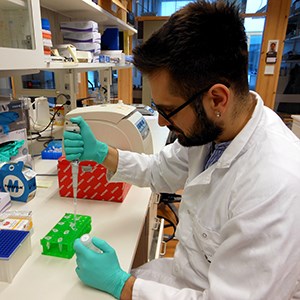Contact
Centre for Reproductive Biology in Uppsala, CRU
P.O. Box 7054, 750 07 Uppsala, Sweden
Phone: +46 18-67 21 74
www.slu.se/cru | cru@slu.se

Researchers from the Division of Reproduction, Department of Clinical Sciences, SLU, have used 16S sequencing to identify the seminal microbiota and found that differences among healthy bulls might be related to their fertility.
Reports on the use of 16S sequencing for the identification of bacteria in healthy animals are lacking. Bacterial contamination of bull semen can have a negative effect on the sperm quality. The aims of this study were threefold: to identify bacteria in the semen of healthy bulls using 16S sequencing; to investigate the differences in the bacterial community between individual bulls; and to establish if there was a relationship between the bacteria isolated and bull fertility.
Semen from 18 bulls of known fertility was used for the DNA extraction and 16S sequencing; 107 bacterial genera were identified. The differences in the amplicon sequence variants (ASVs) and the numbers of genera between bulls were noted.
Negative correlations (p < 0.05) between several bacterial genera with Curvibacter, Rikenellaceae RC9-gut-group and Dyella spp. were seen. Other negatively correlated bacteria were Cutibacterium, Ruminococcaceae UCG-005, Ruminococcaceae UCG-010 and Staphylococcus, all within the top 20 genera. Two genera, W5053 and Lawsonella, were enriched in bulls of low fertility; this is the first time that these bacteria have been reported in bull semen samples. The majority of the bacteria were environmental organisms or were species originating from the mucous membranes of animals and humans.
The results of this study indicate that differences in the seminal microbiota of healthy bulls occur and might be correlated with fertility.
Cojkic, A., Niazi, A., Guo, Y., Hallap, T., Padrik, P. & Morrell, J.M. (2021). Identification of Bull Semen Microbiome by 16S Sequencing and Possible Relationships with Fertility. Microorganisms, 9(12), 2431.
Centre for Reproductive Biology in Uppsala, CRU
P.O. Box 7054, 750 07 Uppsala, Sweden
Phone: +46 18-67 21 74
www.slu.se/cru | cru@slu.se